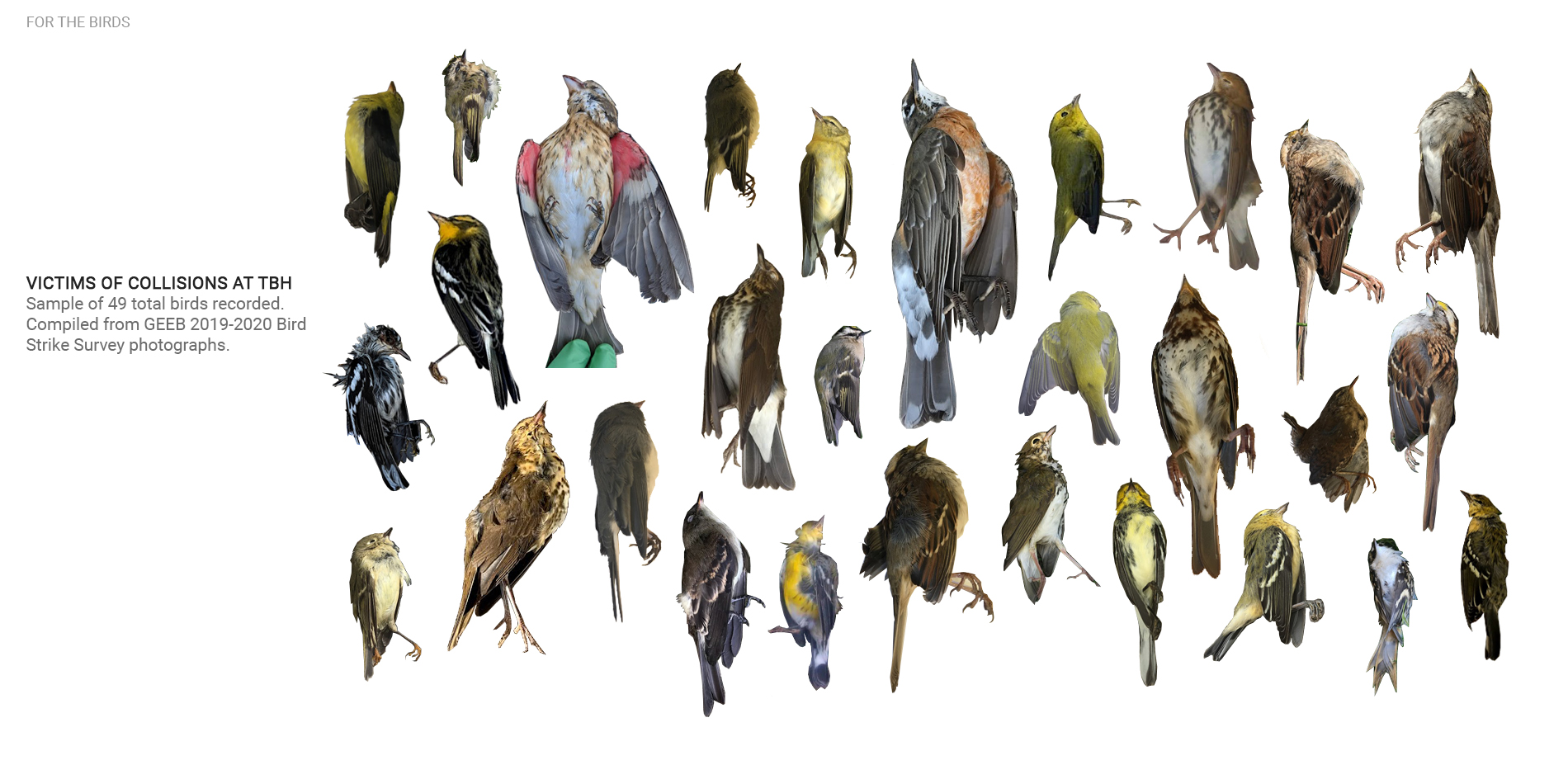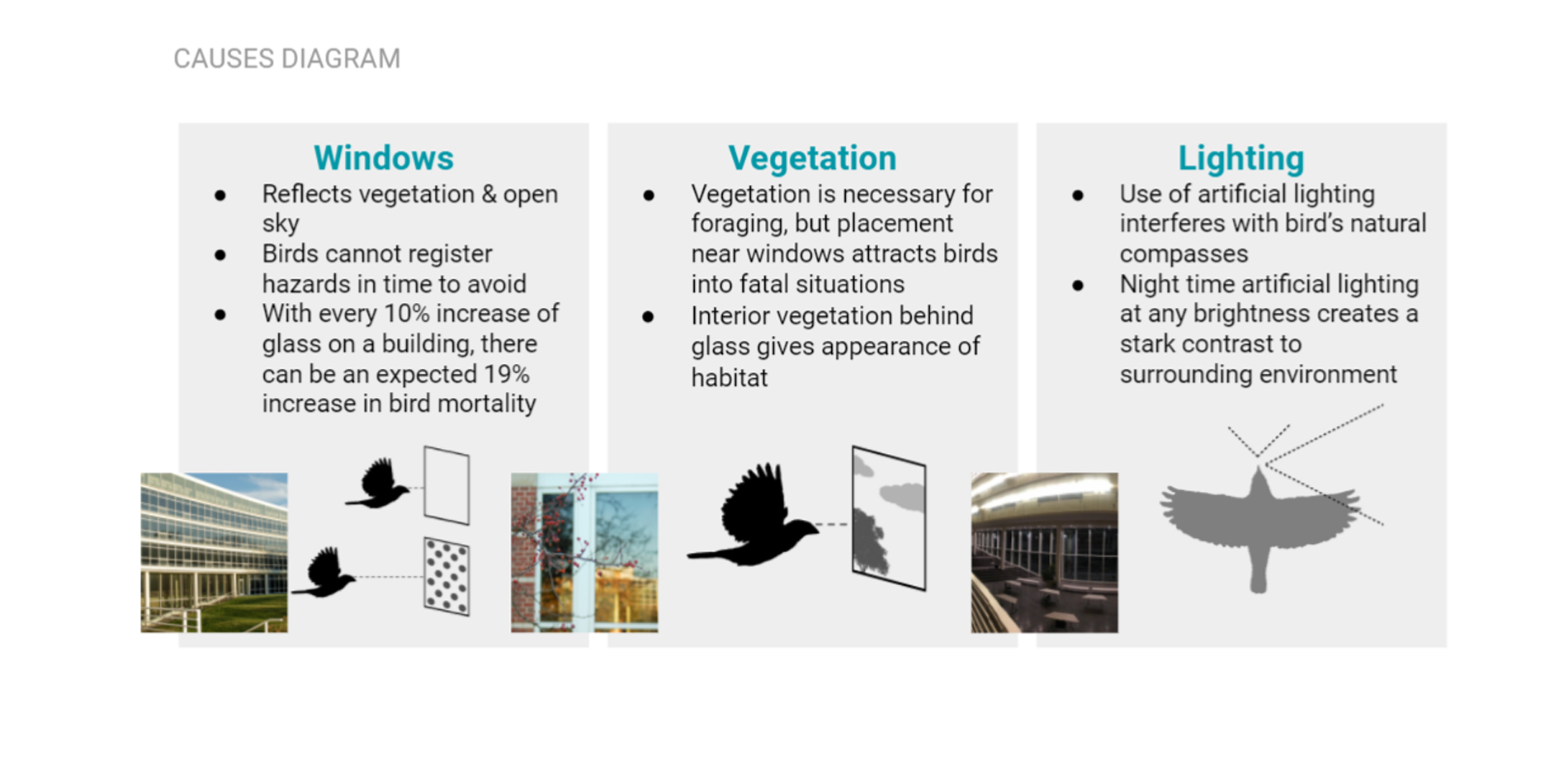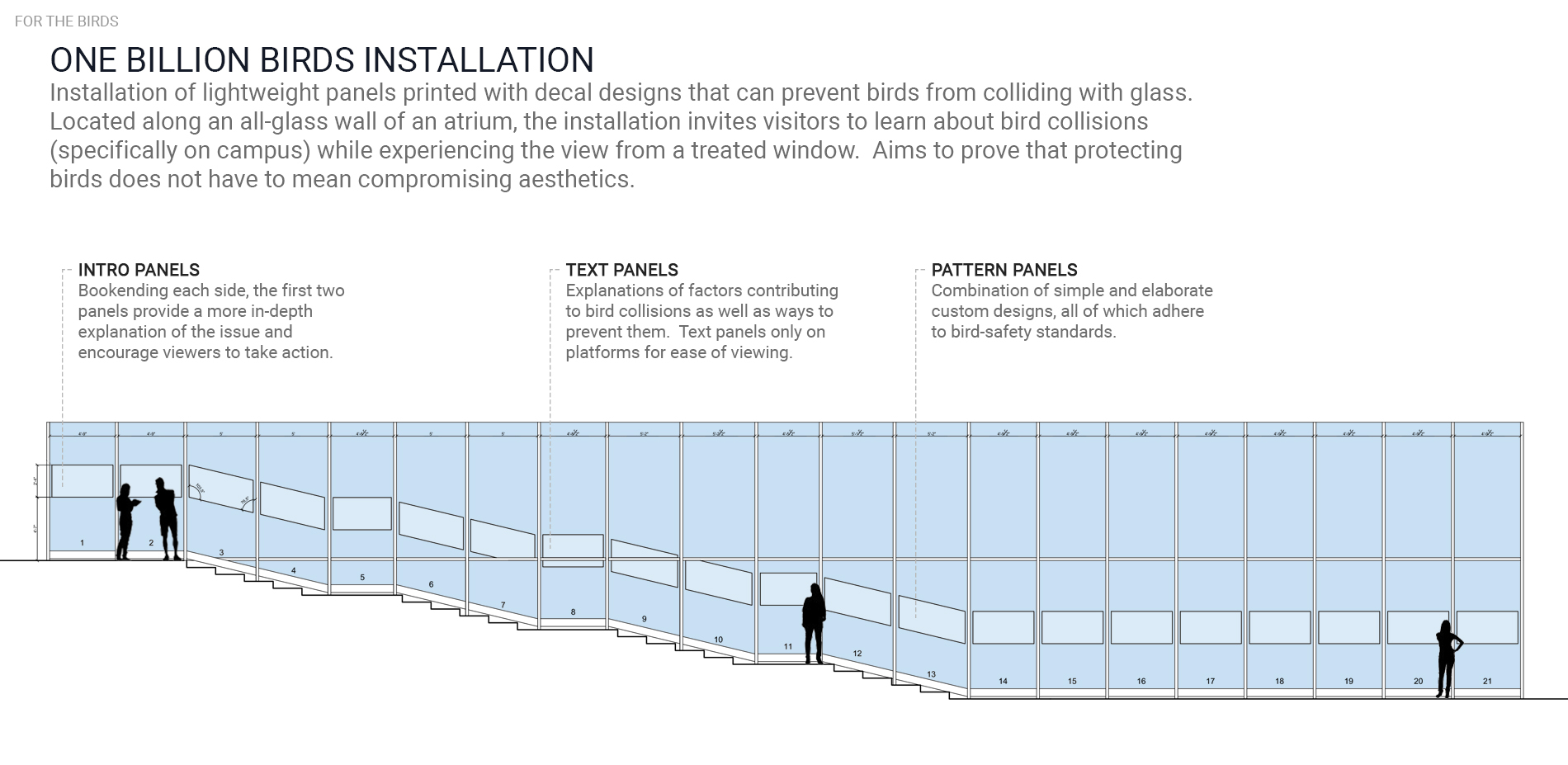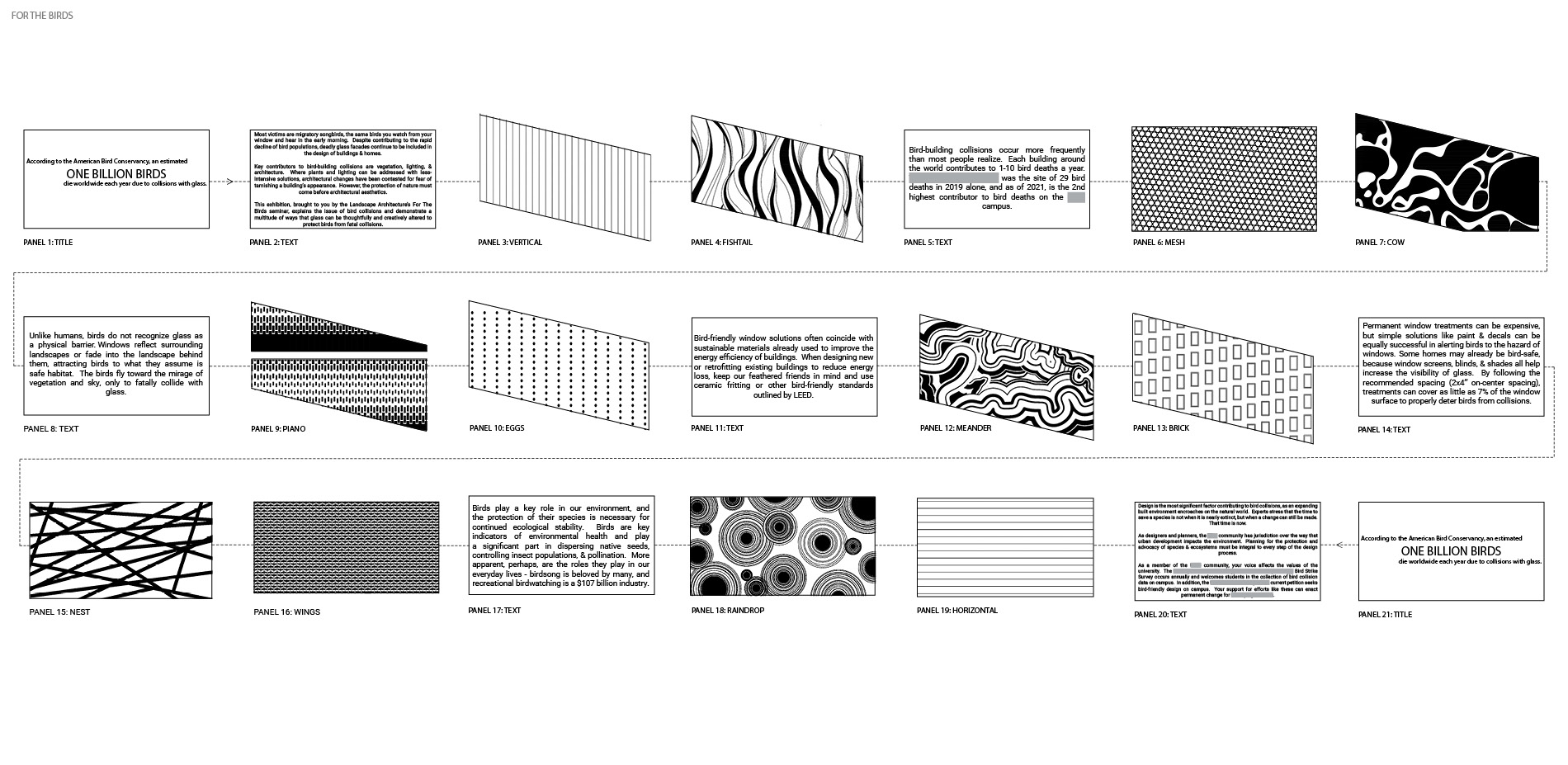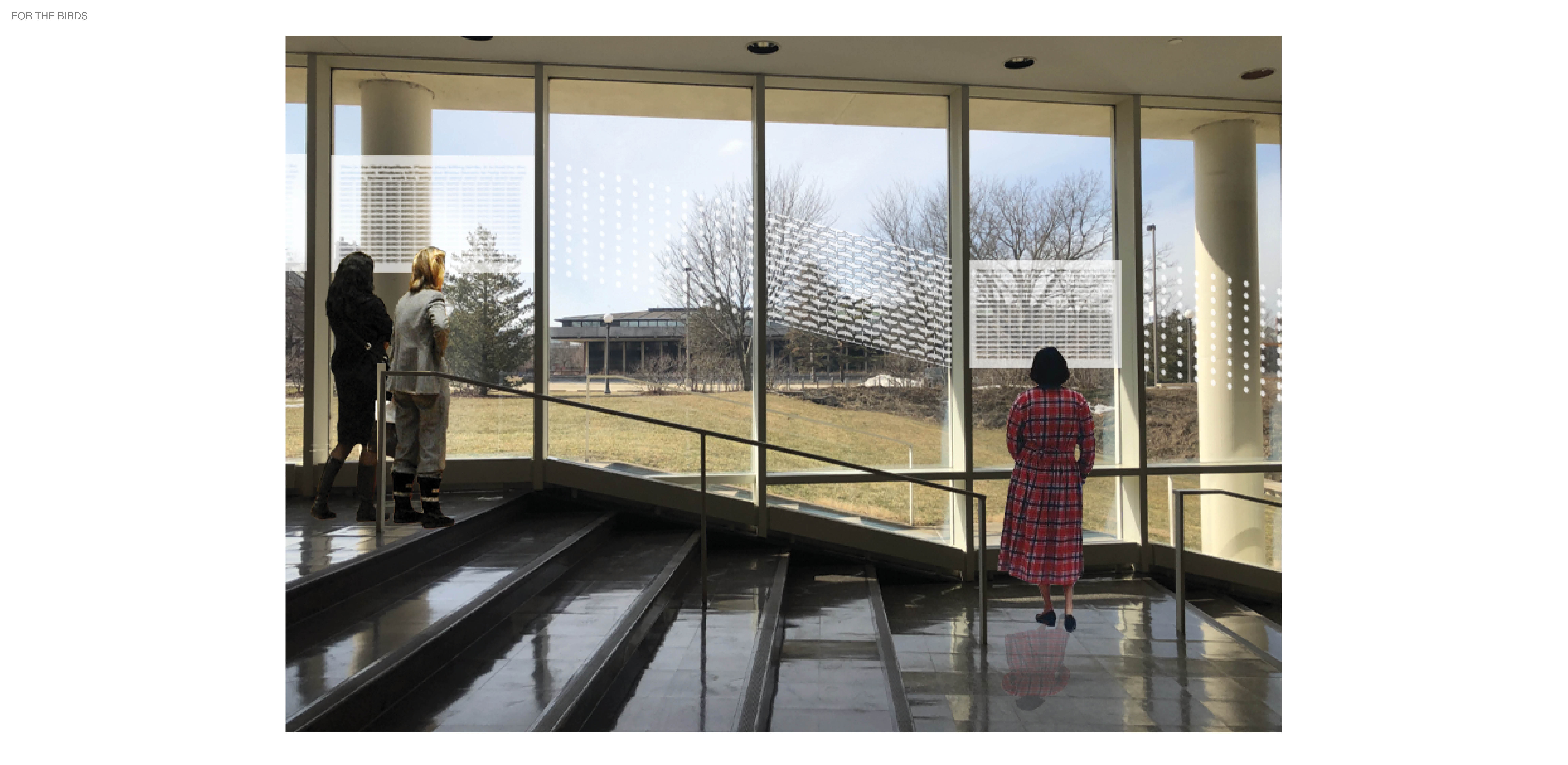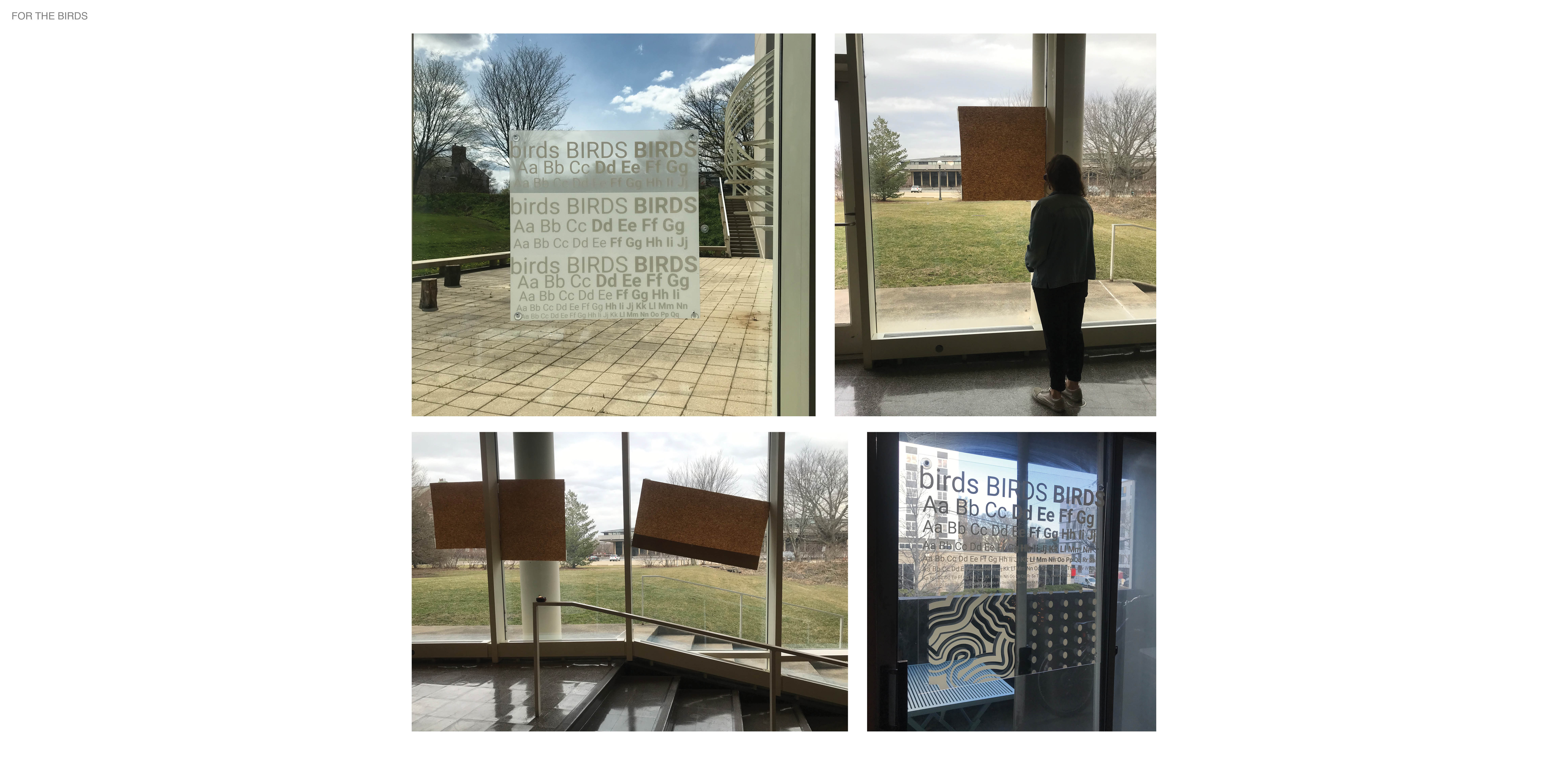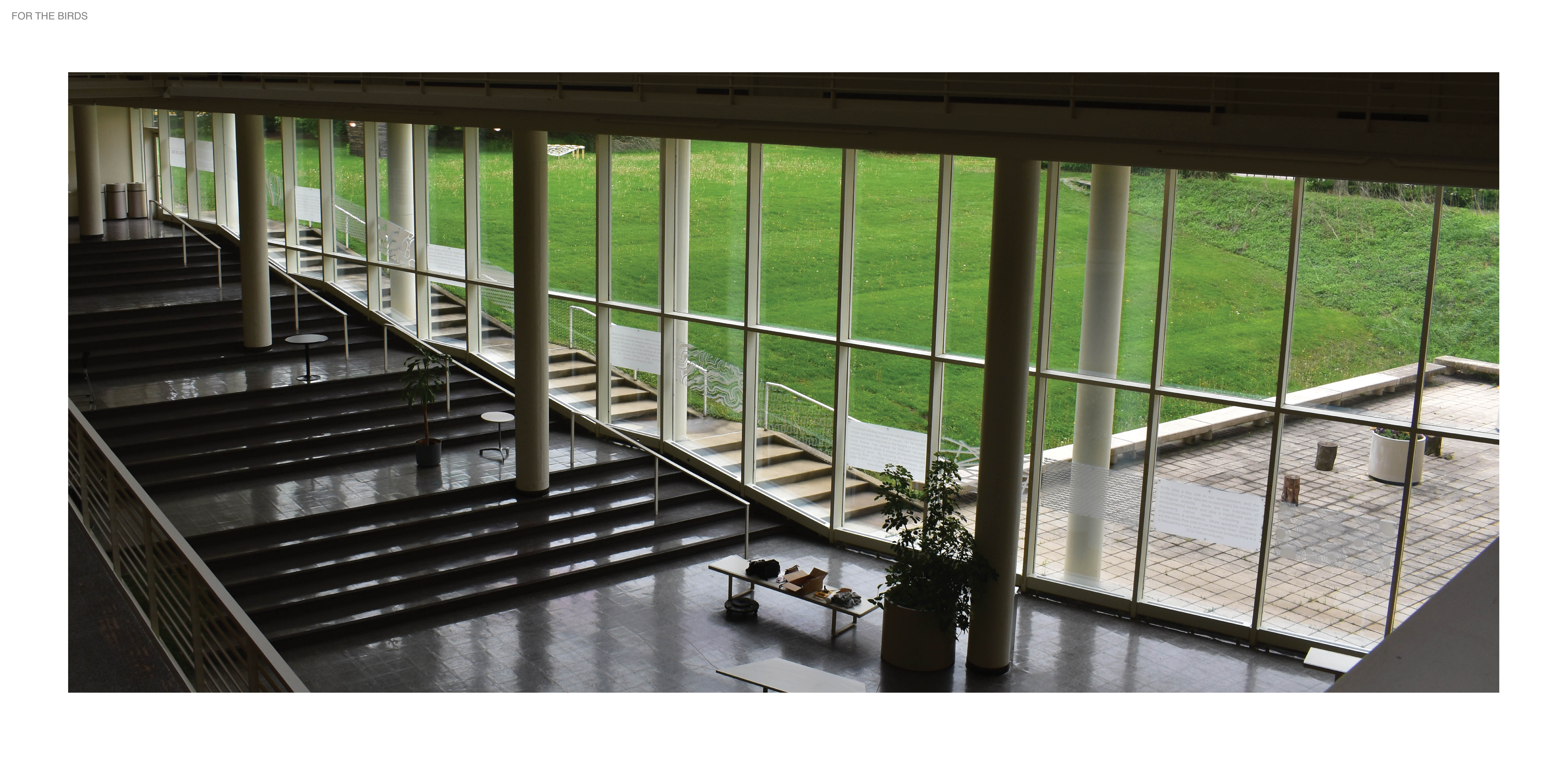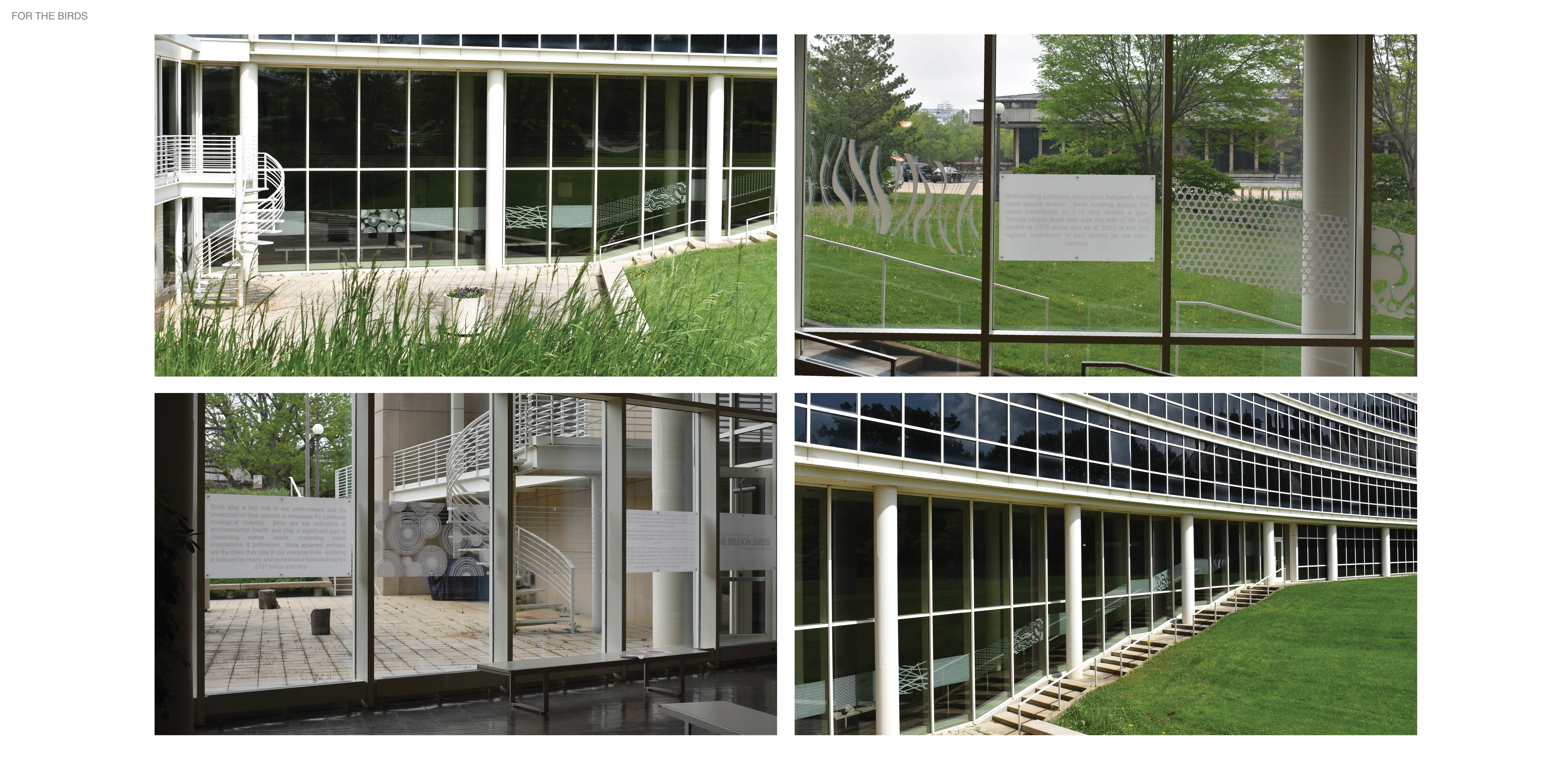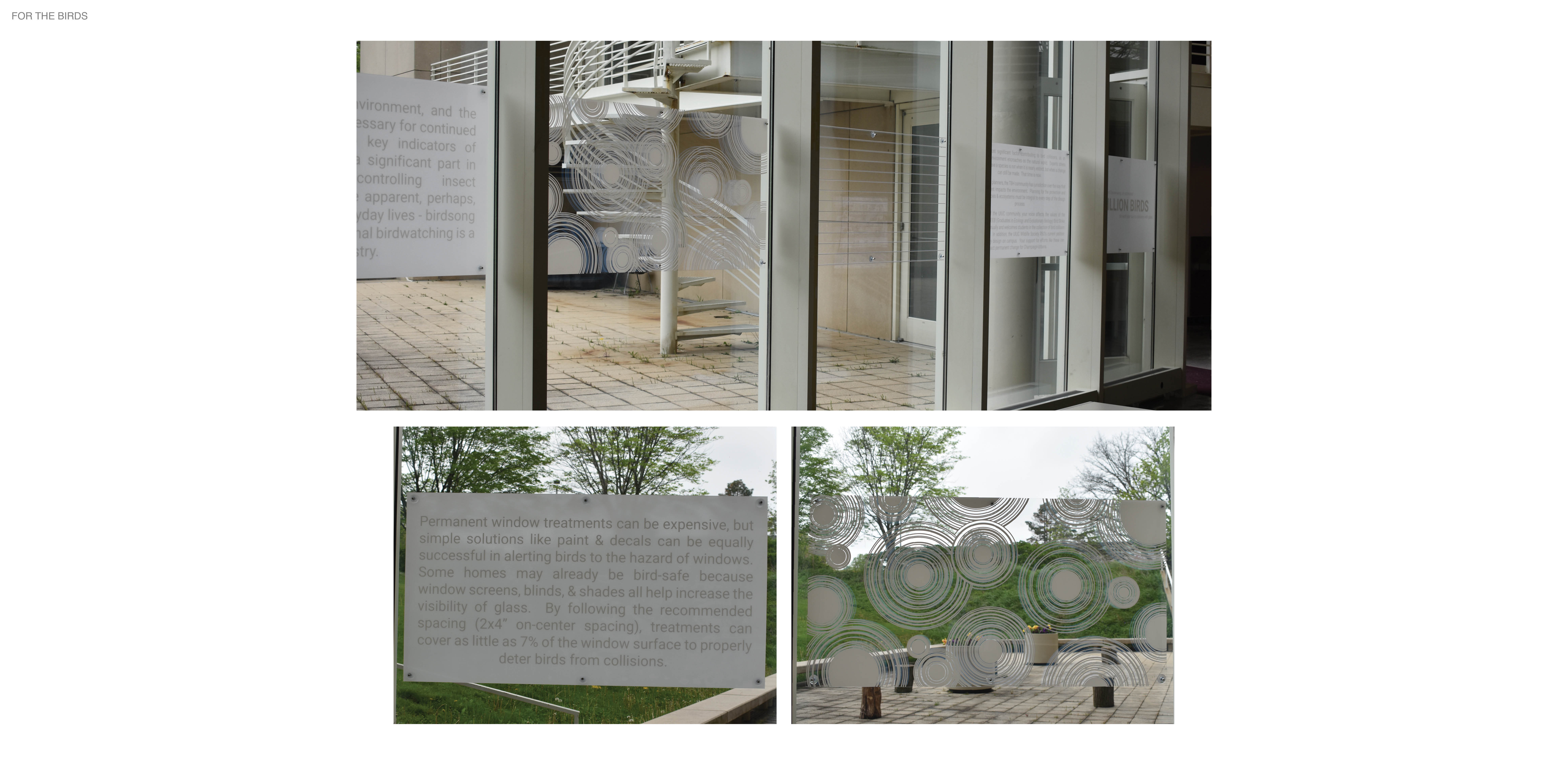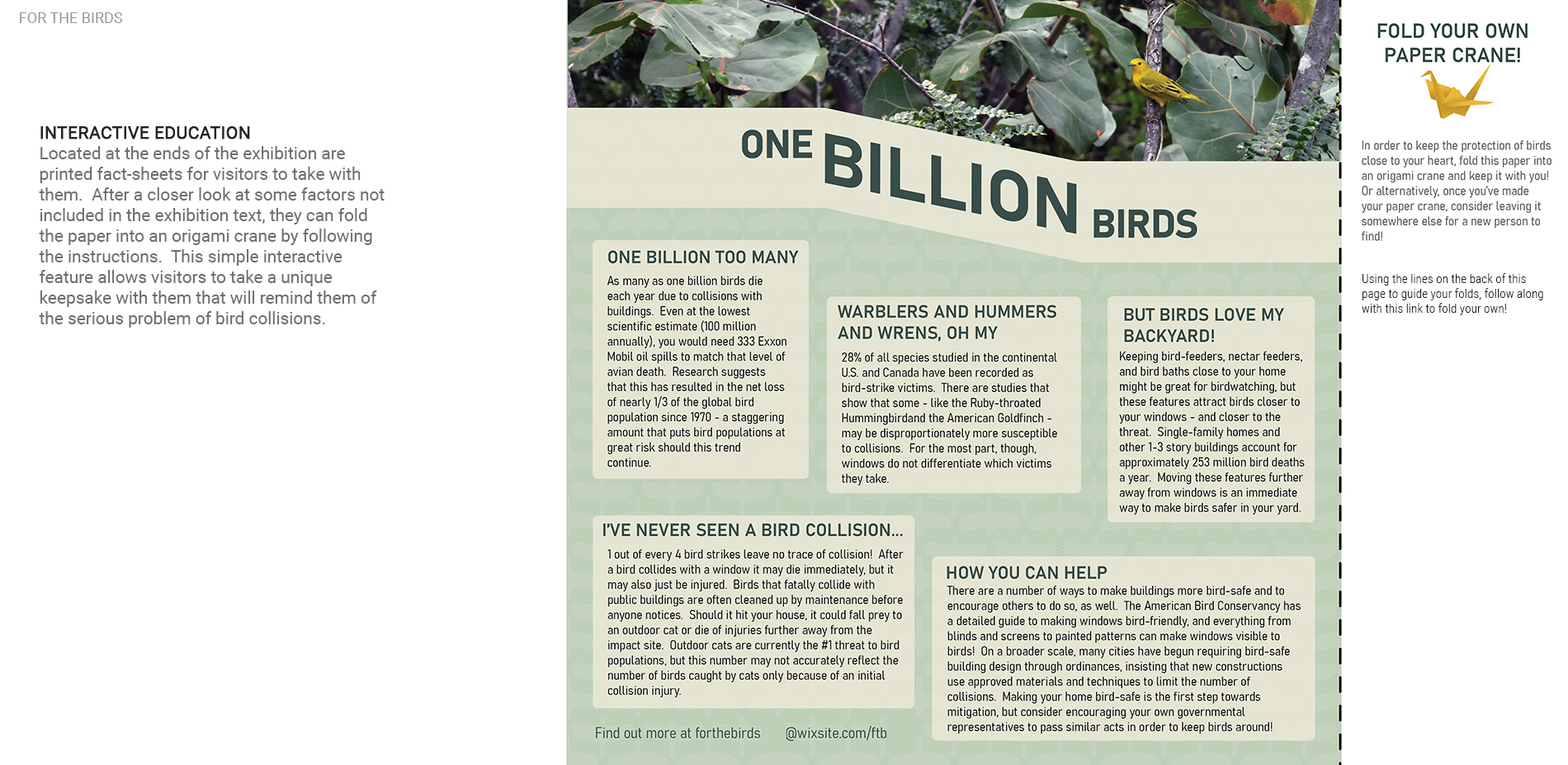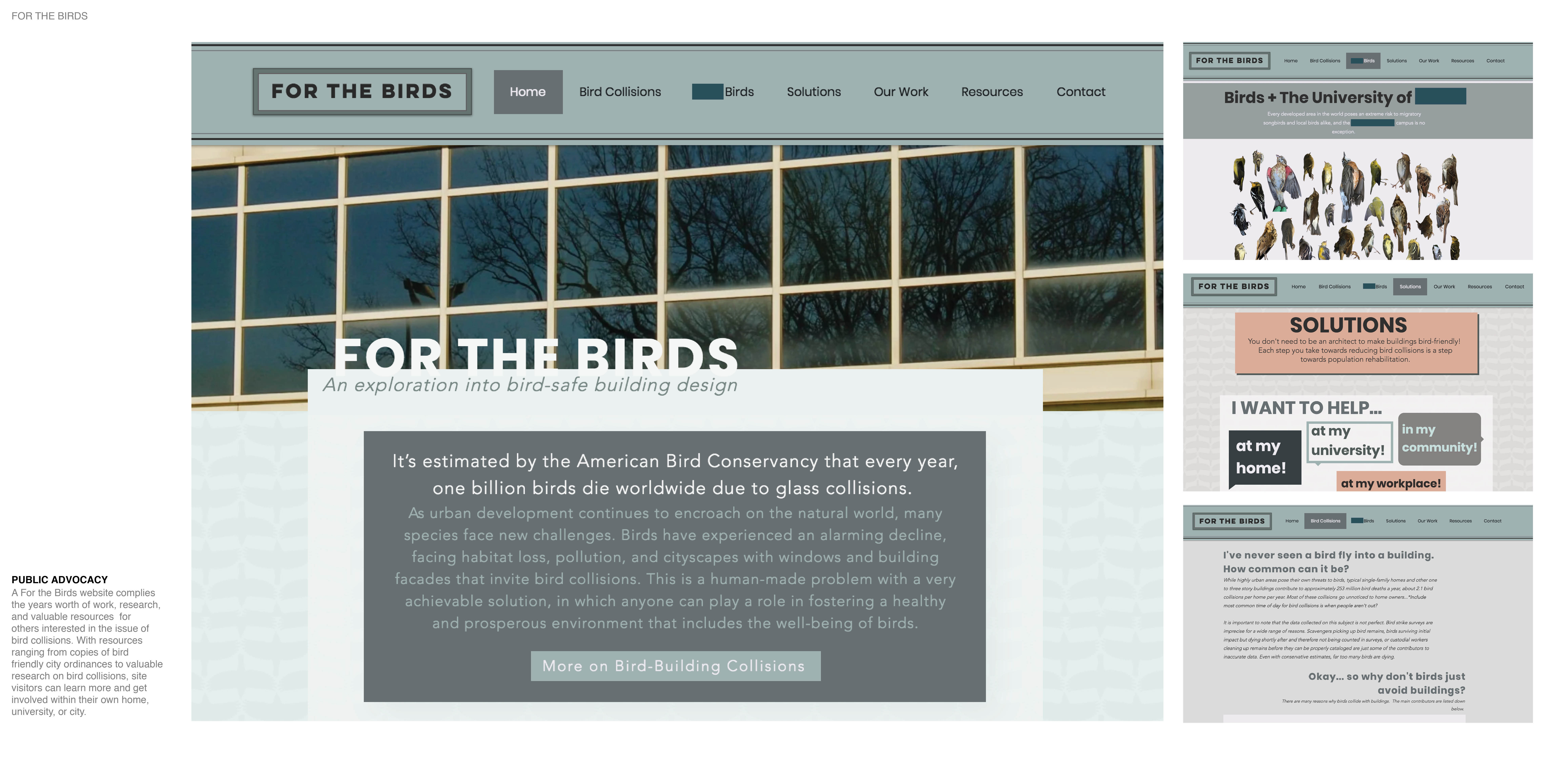For the Birds
Honor Award
Communications
Champaign, Illinois, United States
Elias Martin; Cate Meersman, Student ASLA; Hailey Malone
Faculty Advisors: Dede Fairchild Ruggles
University of Illinois at Urbana-Champaign
This team is addressing the issue of birds colliding with campus windows by deploying a strategy in an exhibition-like format. The etchings themselves are interesting as patterns, and onlookers can see how the patterns can unobtrusively halt collisions between birds and classroom windows. It is an excellent prototype to create buy-in across the campus—from students and administrators—for a mitigation strategy.
- 2021 Awards Jury
Project Statement
For The Birds is the culmination of a year-long independent study exploring the relationship between buildings, landscape, and bird collisions. Approximately one billion birds die globally each year due to collisions with buildings a result of extensive glass facades, confusing interior and exterior lighting, and foliage that attracts them toward windows. Design has played a key role in this, as the human desire for aesthetics often takes precedence over the safety of local and migratory birds.
Project Narrative
COMMUNICATIONS NARRATIVE
The One Billion Birds installation seeks to raise awareness and educate faculty and students of the often-overlooked crisis of bird-window collisions. It is estimated by the American Bird Conservancy that one billion birds die as a result of window strikes each year. Our team began to notice the frequency with which we found dead birds along the west side of our building, which houses over 3,000 square feet of highly reflective glass. We knew these two factors had to be related, so we established an independent study with the help of one of our department heads to investigate the issue. It was quickly realized that birds dying from window collisions is a widespread issue that was not receiving the attention it needs.
RESEARCH
Starting in the Fall of 2020, our team began thoroughly researching bird collisions, their causes, and possible ways to prevent them. In addition to reading decades of research from scientific journals, we consulted with an ornithologist and bird-collision specialist, a landscape architect key to establishing the Chicago Bird Friendly Ordinance, and biology graduates collecting data on bird collisions on campus, it became clear that windows are deadly to birds and design plays a key role in their fate. We learned that birds are unable to perceive glass as a solid surface, often mistaking it for the clear sky reflected in the window, or seeing through a clear pane of glass. From the research and experts consulted, the solution seemed clear: windows need to be treated in a way that allows birds to see them, and it is as simple as applying dots in a 2” by 4” grid. If the solution was so simple, why was this not being implemented? From the experts our team met with, the fear of marring the appearance of a building, whether it was fritting done as part of installation or decals applied after, kept many architects and urban planners from utilizing these simple solutions.
IDEATION
The data from the biology graduates was highly influential in our work, as it highlighted our department building as the second highest rated building for bird strikes. This also provided us with an ideal lab to test materials and solutions, as well as an opportunity for impactful outreach. Our original goal was an intervention for the entire west side of the building, however, it was out of scope and out of budget for our study. Instead, we created a plan for advocacy. The first move to bring awareness is to educate, and this was done with the help of a prominent ornithologist who came to speak at a department event. This went a great deal in laying the groundwork for our future phases as it brought the issue to the three department heads’ attention. We knew that more work needed to be done to create lasting outreach for future generations of urban planners, architects, and landscape architects as well as establishing a resource for designers to use as they move forward through the curriculum. Our team spent four weeks going through the design process where we decided that the best way to show the solution to designers was to show them the physical solution. Our intervention also had to be impermanent, yet lasting, as the building is a shared space between three departments. We proposed an installation consisting of acrylic panels that would have decals applied to them, affixed to the west wall windows through suction cups, to demonstrate that life saving patterns are not intrusive and could also enhance aesthetics. The installation would move down the steps of our department buildings atrium in a ribbon, detailing the prominence of bird deaths, their impact, how landscape architects, architects, and urban planners can contribute to reducing bird fatalities, how students can be involved on campus, and offers an invitation to students and faculty to an ongoing petition to change building codes on campus to account for bird safe design.
IMPLEMENTATION
We met with the three department leads, our campus landscape architect, and the faculty director who all gave us permission to begin working on materials and installation. After researching and testing varying materials, UV-resistant acrylic, to prevent yellowing with age, applied to the atrium windows with threaded suction cups would be the base for our installation. Threaded suction cups provided a sturdy, removable solution that would leave no damage on the glass but also be able to remain in place. Three weeks were allowed for material testing to find the most economic and effective way to communicate what we had learned with department students in a striking manner. We knew showing decals and designs alone would not be enough to inspire new designers, so after every two patterns shown, an information panel details specifications on implementing bird safe design, key contributors, additional benefits, and other ways to get involved. This intervention is set to last through the fall semester of 2021, but we gained permission to leave it place as long as no one else creates a window intervention.
ADVOCACY
Brochures designed to be folded into cranes offer visitors a way to take a piece of our exhibit with them and spread the information across campus. In addition to physical installation in our atrium, our team designed a website to host the research we found, more information about our work, and resources for those who wish to learn more. This provides a platform for further advocacy campus, where work can be compiled and shared in an easily accessible manner. The installation itself will serve as a means for advocacy. Along with its large scale, interesting designs and large captions pull visitors and students of the department building into the atrium, where students work and host pin-ups, to read more deeply into the issue and provides resources for implementation, encouraging the use of bird safe design in our work so that future generations can build momentum for change.
